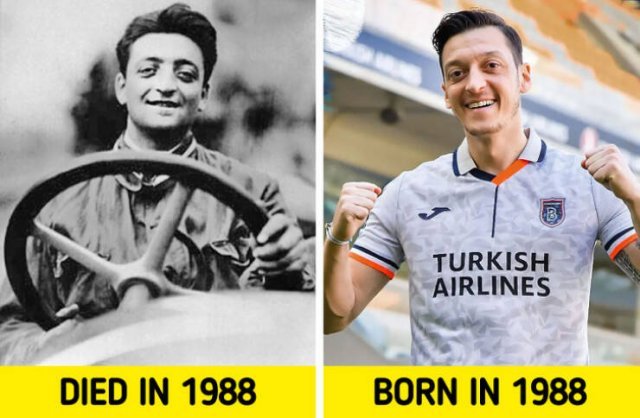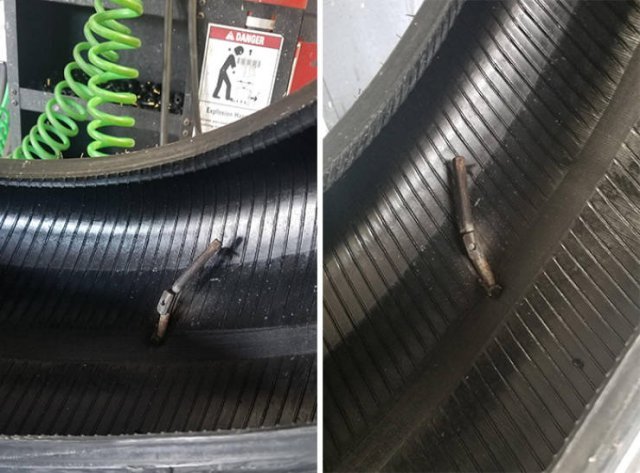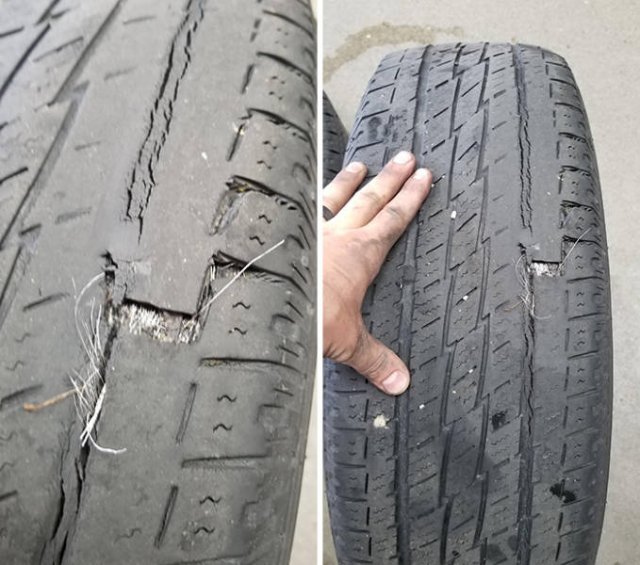The newest registered user is bitaacademy
Our users have posted a total of 44531 messages in 6558 subjects

WORLD CLOCK
INFORMATION VINE * The History of The Manhattan Project *.
Valley of the Sun Casual Club :: WORDS , FACTS , DATES , GAMES & TRIVIA & HISTORY :: INFORMATION VINE
 INFORMATION VINE * The History of The Manhattan Project *.
INFORMATION VINE * The History of The Manhattan Project *.

Photo Courtesy: [Bettmann/Bettmann/Getty Images]
After the United States had gotten involved in the Second World War, the government had decided to invest in research for an atomic bomb; the U.S. had a strong belief that the use of nuclear technology would end the terrible conflict and that if others were investing in nuclear weapons, then so should they.
The result of the United States' interest in atomic bombs was The Manhattan Project, and the idea for that project was birthed before the start of the war (because of German insight). Some of the top scientists from around the world worked together in the 1930s and 40s to create a bomb that would destroy thousands of lives in the fall of 1946.
The Reason Why The Project Was Invented
The Manhattan Project was invented after the United States had caught word that two German scientists were working on nuclear technology. The scientists, Otto Hahn (shown below) and Fritz Strassmann were reported to have been working for Adolf Hitler, and this had frightened the U.S.

Photo Courtesy: [STF/AFP/Getty Images]
At the turn of the 1930s, Otto and Fritz had discovered nuclear fission in their lab, and not long after they did, United States intelligence agents reported to the president about their findings. The U.S. had thought that it was urgent to start the Manhattan Project in case Hitler would've decided to use atomic bombs or weapons of mass destruction.
A Novel That May Have Inspired The Project
Most scientists and innovators become inspired by the work around them, and that may have been the case with one of the notorious scientists who worked on the atomic bomb, Dr. Leo Szilard. In this case, Leo was a fan of the novel The World Set Free by H.G. Wells.

Photo Courtesy: [Anonymous/Wikimedia Commons/Public Domain]
Pictured above is the original book cover in 1918, and Leo (the Hungarian-American scientist) thoroughly enjoyed this book, authored by a British writer. The book is based on a war-torn world that utilizes weapons of mass destruction, and Dr. Leo Szilard had read the novel shortly before he got a patent for nuclear chain reactions.
Franklin D. Roosevelt Led The Project
After U.S. intelligence operators had informed the president at the time, Franklin D. Roosevelt, about the scientists who were working under Hitler and their discoveries, the president took immediate action to, in his mind, attempt to protect the United States.

Photo Courtesy: [Hulton Archive/Hulton Archive/Getty Images]
After hearing of the nuclear technology, Roosevelt (pictured above) formed the Manhattan Project in 1939, and he started the operation by creating the Advisory Committee on Uranium. This committee consisted of military officials and scientists who were ordered to research uranium and its usage in weapons of mass destruction.
Research At The Columbia University
Some of the scientists that worked under the president's orders included Enrico Fermi and Leo Szilard, and the first of their studies were conducted at Columbia University (pictured below). Moreover, most of the scientists who worked for the Manhattan Project and their experiments were funded by the United States government.

Photo Courtesy: [Stringer/Archive Photos/Getty Images]
While at this university, these two physicists had mostly worked on radioactive isotope separation in their laboratories. Parts of the separation process, including uranium enrichment and nuclear chain reactions, were studied often in the facilities, and Enrico and Leo were some of the leading minds in the nuclear project.
How The Project Got Its Name
The Manhattan Project is an essential part of world history because of the effects it had on various locations, particularly in Japan. Naming the project was no simple task, and it got its name because a lot of the research was first done in Manhattan (like at Columbia University, pictured below).

Photo Courtesy: [Bettmann/Bettmann/Getty Images]
The primary contractor for the operation, Stone & Webster, was also located in Manhattan, along with the Army Corps of Engineers North Atlantic Division; countless factors attributed to the Manhattan factor in the name, and the government didn't want to involve any nuclear or scientific principles in the name so that it would not appear suspicious.
The Changes To The Committee
The Advisory Committee on Uranium was created when the president took the first step of action towards a nuclear program after finding out that Germany had advanced in some new nuclear technology. Additionally, in 1940, this committee had gone through some significant alterations.

Photo Courtesy: [Bettmann/Bettmann/Getty Images]
The committee had been renamed the National Defense Research Committee a year after its creation, and the following year, the organization name was finally confirmed as the Office of Scientific Research and Development (OSRD).
The United States Had Entered War
Like most world conflicts, the U.S. got involved shortly after the Second World War had started. President Franklin D. Roosevelt had stated that the United States would enter the international conflict after the Japanese had attacked Pearl Harbor (pictured below).

Photo Courtesy: [Fox Photos/Hulton Archive/Getty Images]
President Roosevelt decided to become allies with France, Great Britain, and Russia, in order to defeat the Axis powers of Germany, Japan, and Italy when he entered the United States into the Second World War. The Manhattan Project became a military project in 1942 when the president authorized the joining of The Army Corps of Engineers to the OSRD.
An Additional Committee
The Interim Committee was created because the American government believed that there needed to be more research and assistance with the atomic bomb projects and decisions. This committee was supposed to be temporary and was created to address issues like where the bombs would be dropped.

Photo Courtesy: [Harris & Ewing/Wikimedia Commons/Public Domain]
This committee was to be kept secret, and it was hosted in New York City; pictured above is a prominent member, James F. Byrnes. The organization had decided that they wanted to target an atomic bomb at a city in Japan, and hopefully in an area that did not have an abundant number of U.S. prisoners of war.
The Official Start Of The Project
In 1942, the Manhattan project progressed when the OSRD created the Manhattan Engineer District in New York City (in the Manhattan borough). Moreover, Leslie R. Groves (an Army Colonel) was intended to be the leader of the operation.

Photo Courtesy: [Corbis/Corbis/Getty Images]
While the organization was coming along in Manhattan, so was the aspect of research by Dr. Fermi (pictured above) and Dr. Szilard, although the research was no longer being conducted at the University of Columbia; the scientists were instead researching for the project at the University of Chicago at the time.
The Migration Of Scientists
At the time of the Manhattan Project, a mass amount of people were immigrating to America from Germany and Europe because of Adolf Hitler and the Axis powers; this benefited the operation because foreign, highly intelligent scientists were willing to work on the atomic bomb.

Photo Courtesy: [Bettmann/Bettmann/Getty Images]
One of the dozens of innovative scientists that moved from Europe included Niels Bohr (pictured above), James Planck, and Edward Teller; most of the geniuses had fled their homelands when Hitler and Mussolini had started enforcing extreme and terrible policies.
Glenn Seaborg
Glenn Seaborg (pictured below) was a famous chemist who was responsible for discovering and crafting plutonium (atomic number 94) in 1940. Glenn and other scientists had extracted plutonium from the substance uranium, and this was an essential discovery for the atomic bombs.

Photo Courtesy: [Bettmann/Bettmann/Getty Images]
At the time of Glenn's discovery in 1940, a mass amount of industrial production of plutonium (particularly in Washington) was created, and Canadian authorities were scoping out suitable lands for military nuclear projects and research to coincide with the Manhattan Project.
The Bomb Was Built In New Mexico
The United States government had needed a rural location to develop a research facility and a bomb-testing site; the only location they found suitable to meet their needs was Los Alamos in New Mexico; this turned out to be the principal facility for the Manhattan Project.

Photo Courtesy: [Corbis/Corbis/Getty Images]
This area was surrounded by nothing but nature (deserts), and no civilizations were anywhere to be found for miles. Moreover, the government had acquired more than 10,000 acres of land to build the laboratories (pictured above) and develop a space capable of testing nuclear energy. Previous to the government acquisition, the land had hosted a reform school for boys.
Activity At Various Facilities
The Manhattan Project was gigantic and spanned across multiple facilities in different states and universities; New Mexico, Tennessee, Canada, Washington, and New York were some of the few key states that helped the United States develop the atomic bombs that decimated Japan.

Photo Courtesy: [Chicago History Museum/Archive Photos/Getty Images]
Pictured above are dorm buildings in Oak Ridge, Tennesse, which were created by the company, Stone & Webster Engineering. These housing facilities were put in place so that scientist and their families would be in close proximity to the important work that the U.S. wanted to conduct. In total, the U.S. had taken over 60,000 acres of American land for the Manhattan Project.
J. Robert Oppenheimer
Without J. Robert Oppenheimer (pictured below), the Manhattan Project may have never gotten as far as it did; he was a physicist who had developed the idea of nuclear fission among other elite scientists. To honor his achievements and allow him to further his work, he was deemed the director of the Los Alamos Laboratory (in New Mexico) in 1943.

Photo Courtesy: [Hulton Archive/Hulton Archive/Getty Images]
Oppenheimer had established himself as a scientist before the Manhattan Project and had previous experience with researching bombs; he is often called the father of the atomic bomb. Other than being briefly associated with Communists, Oppenheimer had made significant achievements with the United States' goal of building a weapon of mass destruction.
Project Y
The United States had formed numerous secret organizations to establish the atomic bombs to drop on Japan, and one of the primary operations was Project Y, otherwise known as Los Alamos Laboratory (which was officially ready for use on January 1st, 1943).

Photo Courtesy: [Denver Post/Denver Post/Getty Images]
Those who lived at the Los Alamos Laboratory and its facilities (pictured above) were the leaders of the Manhattan Project, and they were the first facility to develop and test atomic bombs for the United States government and research nuclear technology as a whole.
The Trinity Test
The first official test of an atomic bomb was called the Trinity Test (pictured below), and it occurred in a desert near the facility in Alamogordo, New Mexico. The test was conducted on July 16th, 1945, and the mushroom cloud was over 40,000 feet high.

Photo Courtesy: [United States Department of Energy/Wikimedia Commons/Public Domain]
The bomb had been detonated at 5:29 a.m. and this test evolved into a worldwide craze for nuclear energy known as the Atomic Age. The plutonium explosive had been developed at the Los Alamos facilities, and it was the first known nuclear bomb to be set off in the world.
Two Types Of Bombs Were Produced
Oppenheimer and countless other scientists had worked to create two types of bombs for the attack on Japan and the bombs were named the Little Boy and the Fat Man. Pictured below are replicas of these bombs that scientists had built at the Los Alamos Laboratory.

Photo Courtesy: [Corbis/Corbis/Getty Images]
As for the construction of the bombs, the Little Boy bomb was made of uranium, and the Fat Man was constructed with plutonium; these atomic weapons were essential for the United States' plan to use force on Japan and end the Second World War.
Dr. Leo Szilard
Dr. Leo Szilard (pictured below) was well educated and had studied physics from a very young age, and when Adolf Hitler rose to power, he moved to England to continue his education and his work with nuclear fission. Moreover, Dr. Szilard had been the one to alert the American president, Franklin D. Roosevelt, that Germans had started to develop nuclear technology.

Photo Courtesy: [unknown photographer/Wikimedia Commons/Public Domain]
By 1940, this professor had been a guest lecturer countless times in the United States, and he finally earned his American citizenship, moved to New York, and started working on the atomic bomb project that year; Dr. Leo Szilard was one of the first and primary leaders when it came to developing the Manhattan Project.
Albert Einstein Was Not Involved At All
Most people believe that the celebrated scientist, Albert Einstein, was actively involved with the Manhattan project, although this is hardly true. Albert was only involved when Dr. Leo Szilard wrote a letter to the American president and had him sign in it in order to bring attention to the letter, which stated that the U.S. should invest in a nuclear program.

Photo Courtesy: [Bettmann/Bettmann/Getty Images]
Even though Albert signed this letter, Leo formed the entire idea and wrote the statement to the president in 1938, stating how Hitler was making advancements with nuclear technology. Moreover, people were not even allowed to talk to Albert about the project, even though he was the most famous physicist of his time.
British Involvement
The Frisch-Peierls memorandum was created in 1939-1940 in Britain by leading scientists and it explained the possibility of creating atomic bombs, and how it would be a valuable resource to have as a world power; the Prime Minister and American president were also present at this meeting and declaration (pictured below).

Photo Courtesy: [Keystone-France/Gamma-Keystone/Getty Images]
By this time, the British government had joined the rapid atomic race, and their nuclear operations were surprising to Americans when the British had shown off their achievement and shared information with the other world power; America was behind in the atomic race before they even decided to bomb Japan.
The Quebec Agreement
In 1943 in Quebec City, Canada, world powers (pictured below) gathered to discuss the use of nuclear technology. The United States had met with Britain to talk about the procedure for wanting to use nuclear weapons, and they agreed that the U.S. had to get Britain's consent if they wanted to use nuclear weapons.

Photo Courtesy: [War Office official photographer/Wikimedia Commons/Public Domain]
The Quebec Agreement was a formal document between Britain and the U.S., and the United States had promised to discuss the use of a nuclear bomb if they wanted to utilize one before actually going through with the action. Moreover, in 1945 (while the bomb was being built), the U.S. had altered the agreement and stated that the U.S. merely had to inform Britain if they wanted to use a nuclear bomb.
Dr. Enrico Fermi
Dr. Enrico Fermi (1901-1954) was a part of the Manhattan Project from the very beginning, and he was a talented Italian physicist who was intelligent with both theoretical physics and experimental physics; he is known as the father of the nuclear age and won a Nobel Prize in physics.

Photo Courtesy: [Bettmann/Bettmann/Getty Images]
Dr. Enrico was extremely popular for his work with the atomic bomb and nuclear reactors, but he was also known for some of his philosophical ideas and his creation of the Fermi Paradox. Enrico had questions about extraterrestrial life, and he believed that intelligent life had not contacted humans because they were too disastrous.
General Leslie Groves
General Leslie Groves was also a pioneer in the Manhattan Project, and he had replaced General James Marshall when he was declared unfit to fulfill tasks for the operation. Moreover, the Manhattan Project was a military operation run by the Army Corps of Engineers, which explains the high volume of military officials involved with the project.

Photo Courtesy: [MPI/Archive Photos/Getty Images]
Leslie (pictured above) was born in New York and was highly involved with the scientific and technical approaches of top-secret operations like the Manhattan Project and the construction of the Pentagon. Additionally, Groves had gone to the University of Washington and three other military schools and authored a book called, Now It Can Be Told: The Story of the Manhattan Project.
Edward Teller
Even though Edward Teller (born in Hungary and died in California) was also a pioneering physicist in the Manhattan Project, he often was not recognized for his contributions, and by the end of his involvement, the entire scientific community disliked him (he got Oppenheimer's security clearance revoked).

Photo Courtesy: [Bettmann/Bettmann/Getty Images]
Edward was occasionally a critic of Oppenheimer's work, and they worked together closely on the Manhattan Project until Oppenheimer ridiculed and disowned Edward's excellent work with hydrogen bombs (which turned out to be helpful to the scientific community).
Women's Involvement With The Project
Only a few women had been involved with the secret Manhattan Project, and even fewer of them were scientists working on the atomic bomb itself. Overall, men controlled the Manhattan Project, but there were a few women who had extreme power and responsibility in the operation.

Photo Courtesy: [Corbis/Corbis/Getty Images]
One of these important women included Dorothy McKibbin (pictured above), who oversaw all the fresh staff and personnel at the Los Alamos Laboratory. Women in these positions oftentimes had access to highly protected information that could cause serious trouble if given to the wrong people.
The Cost Of The Project
When the U.S. government had decided to go forth with the Manhattan Project, the cost was not their primary concern, seeing that they were already in massive debt from the Second World War ($3.3 trillion). Furthermore, the total cost of the operation to create the atomic bombs cost $2.2 billion.

Photo Courtesy: [Prisma Bildagentur/Universal Images Group/Getty Images]
The cost of these high maintenance facilities was a drop in the bucket compared to the trillions of dollars that the United States had racked up in funding for the Manhattan Project and other war operations; the cost of the Manhattan Project was only a week's worth of costs compared to the war, for the U.S. had spent almost $2.2 billion during every week of the war.
The Original Name
The name for the atomic bomb project had been highly debated, for scientists had originally wanted to call it “the Development of Substitute Materials Project,” yet authorities had deemed this too suspicious and stated that it put the U.S. at too high of a risk for spy infiltration.

Photo Courtesy: [Bettmann/Bettmann/Getty Images]
Based on the origin of the project and the people involved, authorities had agreed to call it the Manhattan Project instead because it was more precise and vaguer than the previous title. When naming the operation, the biggest fear that officials had had was spies from the Axis powers figuring out the project and stealing powerful information.
Living At The Development Facility
Most laboratories that were built for the Manhattan Project had a suitable living facility for all the staff and their families; the first site built was a living site at the Los Alamos Laboratory, and oftentimes the scientists had felt isolated from the world as they worked on a revolutionary invention.

Photo Courtesy: [Chicago History Museum/Archive Photos/Getty Images]
Pictured above are dorm buildings in Oak Ridge, Tennessee in 1944, and this facility had dorms created by partnering companies. The Manhattan Project was not strictly based on nuclear labs, for there were construction companies that also worked for this project that would design these towns and placements of laboratories.
The Mystery Behind The Project
The Manhattan Project was a sensitive, secret operation, but there was also a lot of mystery going on behind the scenes of the project. Millions of people didn't know about the construction of the atomic bombs, and even the workers were uninformed about their role in the project as well.

Photo Courtesy: [Corbis/Corbis/Getty Images]
Furthermore, the United States government had hired over 100,000 people to build the Oak Ridge facilities (pictured above are some of the laborers preparing a building location), yet they did not inform them that they were in danger of uranium gases. Most of the work was done in sections, so workers had no chance to unionize and share knowledge about their working conditions in the Manhattan Project.
Safety Measures
When working with deadly chemicals such as plutonium and uranium, the leading scientists had known that safety would be the number one priority in this operation; much of the staff was highly experienced and came into the project with a plethora of knowledge.

Photo Courtesy: [Keystone/Hulton Archive/Getty Images]
Due to the usage of deadly chemicals and extremely dangerous equipment, countless efforts and measures were put in place to aid in the safety of everyone at all the Manhattan Project facilities. A major tactic to ensure safety at the time was to swab people's noses to see if they had breathed in any plutonium during their shifts.
Colonel Boris Pash
Colonel Borish Pash (pictured to the far right) was essential to the Manhattan Project, for he (as a security officer) had ambitions to find out details about the German nuclear program; Pash had led a team of military officials to Italy, France, and Germany to seek information.

Photo Courtesy: [Mickey Thurgood/Wikimedia Commons/Public Domain]
When Pash led this expedition in 1943, he had discovered that the German project was minor compared to the United States and Britain's nuclear operations. After this information was revealed, people had started to feel suspicious about German scientists, especially Werner Heisenberg and Max von Laue.
People Were Scared Of The USSR
The USSR joined the Second World War six months before the United States did, and although they were both classified as Allied powers, the U.S. still feared the Soviet Union and was suspicious of their motives at times. In addition, the U.S. had no trust in the world power and wanted to beat them in the race for nuclear technology.

Photo Courtesy: [Apic/Hulton Archive/Getty Images]
Americans were constantly worrying about the Soviet Union's plan to develop nuclear weapons, and even though the Manhattan Project was kept under lock and key, Soviet spies had infiltrated the operation and gained knowledge on American nuclear operations. Moreover, some of the prominent scientists involved with the project were convicted of espionage after WWII.
David Greenglass
David Greenglass is famous for being involved with the Manhattan Project because he was a scientist who had secretly been a spy for the Soviet Union during the operation. David had lived and died in New York, and he was hired as a machinist for the Oak Ridge and Los Alamos facilities where he worked for a few years during the war.

Photo Courtesy: [Bettmann/Bettmann/Getty Images]
In 1950, the FBI had arrested David for being a spy after catching a few other people (mostly scientists); David had been passing American nuclear secrets to a Soviet official, Alexander Feklisov. Greenglass is related to other famous espionage cases of WWII, for he was Ethel Rosenberg's brother (and he testified against her in court).
The Bomb That Didn't Make It
The scientists working for the Manhattan Project did in-depth research on countless topics pertaining to nuclear technology, and three bombs were developed for the operation. The bomb that didn't make it to the end process for the attack on Japan was called the Thin Man.

Photo Courtesy: [PhotoQuest/Archive Photos/Getty Images]
The Thin Man was not usable because the fission rate of the plutonium (isotope plutonium-240) was too strong for the missile-like design. After the discovery of this technical flaw, the scientists had dropped this idea and moved on to other developments in the Manhattan Project.
The Potsdam Conference
The Potsdam Conference was a vital component of the Second World War, for it was a conference that was held to ask for Japan's surrender. The conference took place in Potsdam, Germany (an Allied city), and United States officials had traveled there to give Japan the ultimatum of surrender or nuclear attack.

Photo Courtesy: [Pictures From History/Universal Images Group/Getty Images]
The ultimatum was given in July of 1945, and officials from the Soviet Union, Italy, and the UK were also present at this conference. In the end, Japan did not accept to surrender, mainly because the U.S. had declared that they would have no world influence or say in post-war activities, and they would have been forced to form a democracy.
The Ultimate Decision
Everyone urgently wanted the war to end, and ever since the idea of retaliating against Japan was thought of, the United States had had their mind made up on using nuclear force on Japan (despite creating an outline that did propose other solutions).

Photo Courtesy: [Bettmann/Bettmann/Getty Images]
The Manhattan Project was created by the military, so military officials were the ones who made the ultimate decision about the atomic bombs; they had thought that excessive force was necessary to end the war, yet scientists strongly believed that using the weapon of mass destruction on open land would have been sufficient. The military did not want to risk being defeated by Japan or the continuation of the war, so they overstepped everyone and aimed for the most deaths possible in Japan.
Project Silverplate
The scientists' work did not end after the atomic bombs were successfully made, for they still needed to create a device that could carry and drop the bombs on the targets. With help from Boeing (an aerospace business) and the Glenn L. Martin Company (Lockheed Martin), the Manhattan Project was able to be completed once an aircraft was created.

Photo Courtesy: [PhotoQuest/Archive Photos/Getty Images]
The operation to create an aircraft was called Project Silverplate, and the U.S. government oversaw the entire process from start to finish. The final invention from this experiment was the B-29 Superfortress, and it cost more than the original price of the Manhattan Project.
The Demon Core
Louis Slotin had made the Demon Core famous when his hand slipped in a 1946 experiment, resulting in a bright blue flash of light in the lab and his death nine days later due to radiation exposure. The Demon Core (a recreation shown below), was a 14-pound sphere of plutonium that was created for the Manhattan Project, with the intent to turn it into an atomic bomb.

Photo Courtesy: [Los Alamos National Laboratory/Wikimedia Commons/Public Domain]
Slotin had used beryllium to manipulate the neutrons of the sphere (which was cut in half), yet this science was dangerous, and the slip of his hand resulted in the fusion of the hemispheres. Slotin was able to disengage the reaction, but again, this resulted in radiation poisoning. This was not the first death that this mass of deadly nuclear material had caused, for many scientists had been killed by their curiosities; eventually, the Demon Core was melted down and mixed with other batches of plutonium.
Hiroshima
The United States had thought that Hiroshima was the ideal place to drop the atomic bomb because it had a population of over 350,000 people, and there were next to no prisoners of war there. Moreover, Hiroshima was a central hub seeing that it was only 500 miles from Japan.

Photo Courtesy: [LOS ALAMOS SCIENTIFIC LABORATORY/AFP/Getty Images]
The bomb (Little Boy) that was dropped was over 9,000 pounds and was filled with uranium-235, and the B-29 bomber (named the Enola Gay) decimated five square miles of Hiroshima once it was dropped.
The Dropping Of The First Bomb
Hiroshima was devastated by the first nuclear attack in history at 8:15 in the morning by the United States, and the atomic bomb had exploded when it was 2,000 feet above the city. The blast was equivalent to 15,000 tons of TNT, and the damage pictured below does not represent the wretchedness that the nuclear weapons had caused.

Photo Courtesy: [AFP/AFP/Getty Images]
American forces had transported the bomb, known as Little Boy, from the Manhattan Project facilities to the U.S. base on Tinian (a Pacific Island) on August 6th, 1945; this forever changed world history, for nuclear weapons had never been used in war before this. The bomb was dropped via parachute and was flown by Paul Tibbets (and the aircraft was named after his mother).
The City Of Nagasaki
Despite the extreme and extensive damage that the Little Boy atomic bomb had caused, Japan had still refused to surrender and end the Second World War. On August 9th, only three days later, the United States had decided to drop an additional nuclear weapon on the Axis power.

Photo Courtesy: [LOS ALAMOS SCIENTIFIC LABORATORY/AFP/Getty Images]
The Fat Man (a replica pictured above) was dropped on the city of Nagasaki, and it went on to destroy three square miles of Japan. Moreover, in this attack, the United States had decided to target the dropping of the bomb on a torpedo-building plant in the area.
The Effect Of The Nagasaki Blast
Despite working on the atomic bombs for years, the second bomb that was dropped was only slightly stronger than the nuclear weapon that was experimented with in the Trinity Test. Moreover, the Fat Man was 10,000 pounds, made of plutonium, and was dropped at 11:02 in the morning.

Photo Courtesy: [Photo12/Universal Images Group/Getty Images]
Over 80,000 people died from this nuclear explosion (shown above), for it was a 22-kiloton blast that would devastate the land and its people for decades to come; this city was located between mountains in a narrow valley, so this deflected some of the blast's power.
The Effects Of The Bombs
The United States had killed over 100,000 people with the atomic bombs (the Little Boy and the Fat Man) in 1946 when they dropped the nuclear weapons on the Japanese cities of Hiroshima and Nagasaki, in attempts to end WWII.

Photo Courtesy: [Universal History Archive/Universal Images Group/Getty Images]
The nuclear weapons of mass destruction inflicted painful deaths and the loss of entire homes, establishments, and families, and the Japanese Emperor was forced to surrender a week after the second attack due to the supreme damage.
The Surrender Of The Japanese
Pictured below is the surrender of the Japanese forces during the Second World War, for they officially surrendered on August 14th, 1945. Additionally, Japanese officials had reported to the American president, Harry Truman, that they were waving the white flag for WWII instead to the former "war hero" president, Franklin D. Roosevelt since he had passed away.

Photo Courtesy: [De Agostini/De Agostini Editorial/Getty Images]
The agreement of surrender was signed on the USS Missouri on September 2nd, 1945, in the waters surrounding Tokyo; the war had settled and essentially ended, and what was left was a disastrous mess that had been caused by the Manhattan Project and the American military.
Post-War Nuclear Energy
Even though the dropping of the second atomic bomb ended the war, the United States and other world powers still had an ardent desire to develop nuclear technologies. Moreover, after the war, the U.S. had created the Atomic Energy Commission to pursue the efforts of the Manhattan Project and other nuclear studies.

Photo Courtesy: [Bettmann/Bettmann/Getty Images]
Additionally, most of the nuclear technology that was invented during WWII was used afterward in post-war nuclear efforts. An example of this would be pictured above, as Dr. Enrico Fermi stands by one of the first nuclear reactors to be created.
Responses From Society
People responded consistently to the development and use of the atomic bombs, and out of the millions of humans, the general census was a mix of opinions; some thought it was the only way to achieve peace, while others voted against the destruction.

Photo Courtesy: [Bettmann/Bettmann/Getty Images]
Pictured above is a group of people, one of which is actively protesting the use of atomic energy in Britain; even though some opinions were mixed, overall Americans were overjoyed that the war was over, and that Japan had surrendered. At first, Americans did not care about the devastation in Japan, until they started to worry about other countries using nuclear power.
Lyndon B. Johnson's Involvement With The Manhattan Project
Years after the Second World War had ended, the conflict on nuclear technology was brought up once more, and this time to the attention of President Lyndon B. Johnson in 1964. During his presidency, Johnson (pictured below), had put a stop to the United States' power in the nuclear industry.

Photo Courtesy: [Keystone/Hulton Archive/Getty Images]
President Johnson and other parts of the United States government had a strong belief that the U.S. should no longer hold a monopoly on nuclear energy and technology; as a result, in 1964, people were allowed to privately own nuclear materials.
The Research Labs Did Not Shut Down
World War 2 had ended after the U.S. had tragically dropped atomic bombs on Japan (in Hiroshima followed by Nagasaki), yet that did not mean that the U.S. shut down all the facilities that they had built under the Manhattan Project; instead of converting the buildings, the U.S. used the labs and dorms to continue researching nuclear energy.

Photo Courtesy: [Prisma Bildagentur/Universal Images Group/Getty Images]
Furthermore, the Manhattan Project had formally ended when the war did, although the United States had decided to continue utilizing the seven National Laboratories in top-secret (including the Los Alamos research laboratory, which is pictured above in the 1970s).
The Aftermath Of The Nuclear Technology
Overall, WWII had a massive effect on nuclear technology, for much of the science known about nuclear materials, like plutonium and uranium, was developed during the world disaster (thinking that destruction would end the conflict once and for all).

Photo Courtesy: [Camerique/ClassicStock/Getty Images]
The nuclear inventions created during WWII created a baseline for all nuclear technology such as reactors, power generators, radiation therapies, medical imaging machines, and much more. As helpful as technology can be, the aftermath of these inventions has led to countless disasters over the years including the Chernobyl Disaster in the 1980s.
 Similar topics
Similar topics» INFORMATION VINE * The History of Transportation*.
» INFORMATION VINE * The History of Prince *.
» INFORMATION VINE * The History of Legos *
» INFORMATION VINE * The History of Baseball *.
Valley of the Sun Casual Club :: WORDS , FACTS , DATES , GAMES & TRIVIA & HISTORY :: INFORMATION VINE

 Events
Events
















































































» SEEING RED & FRECKLES...14
» YES,........BUT
» YES,.....BUT...2
» GET OUT THE MAP...2
» APRIL NATIONAL CELEBRATION DAYS APRIL 26 2024
» SUPER TRUCKS...
» APRIL NATIONAL CELEBRATION DAYS APRIL 25 2024
» WIZE TRIVIA QUIZ * How many pull ups did Gary Lloyd do in 24 hours to achieve the Guinness? *
» WISETRIVIA ANSWER PAGE
» IN THE LOCAL NEWS...4
» MOOMS's...9
» WORD DAILY Word of the Day: * aphorism *
» APRIL NATIONAL CELEBRATION DAYS APRIL 24 2024
» YOUTUBE SHORTS OFF THE WALL...21